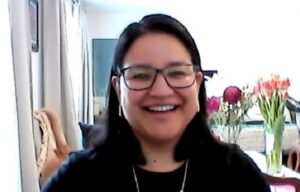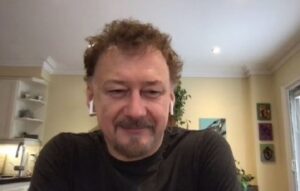Palliative care is what our communities have always done

By Marci Becking
ANISHINABEK NATION TERRITORY— Joanna Vautour and Dr. Michael Anderson provided some 150 participants with great information through their presentation: End of life care – Indigenous Palliative Care Approaches on Jan. 19 during Day Two of the virtual 7th annual Anishinabek Nation Health Conference: We’eni Masaadan Gibimaadziwin – Journey well as you walk your life .
Joanna Vautour is a research coordinator at McMaster University from Serpent River First Nation. Dr. Michael Anderson, Mohawk with family roots in Tyendinaga Mohawk Territory, practices surgical oncology and palliative care medicine.
“Palliative care is what our communities have always done. First Nations hold an enormous amount of traditional, community-based knowledge and expertise in negotiating the personal, familial, and community experiences of caring for community members who are sick. However, through colonization, health systems have been imposed on First Nation people and typically do not support Indigenous care.” – Improving End of Life Care in First Nation Communities Project lead by project manager Holly Prince, Lakehead University.
This statement set the tone of their presentation and they first touched on the topic: Building your Circle of Care and Rights of Ceremony in the hospital.
“Who is in your Circle of Care? The Care Team can consist of a variety of people: family doctor or doctor specializing in palliative care, a nurse, community health representative, social worker or community wellness worker, spiritual counsellor or traditional healer, personal support worker, family and friends. Anyone who can meet the ill person’s needs,” said Joanna Vautour. “There are many roles that play in that part of the Circle of Care and one of the roles that gets overlooked is the role of family and friends. The statistic is 90 per cent of care happens in the community, in the home. 10 per cent is facilitated by health care professionals. These are the individuals in your care team.”

Dr. Anderson said that one of the interesting things about practicing in palliative care is that the medical team becomes the least important – and it should be that way.
“In the early days of the [COVID-19] pandemic, it was interesting to me that there were periods where we were restricted to visit people. What happened in a lot of cases, hospitals restricted families from spending time with their loved one who was approaching the end of life, so people were saying, ‘I’m not going to put my loved one in a hospice if I can’t be with them – I’m going to manage them at home’. All sorts of people probably would have never imagined that they would ever manage their loved one to the end of life at home and they did so. It was eye-opening for a lot of people, how much – with a little bit of support– people could manage at home. They got to be where they wanted, with their loved ones, with family, with support, instead of being isolated alone in an institution. That’s a similar analogy to what remote communities see when loved ones are removed from the community, to be put into a hospital or hospice [away from home]. It highlighted just how important all of the non-medical pieces are and that the medical pieces should be the parts that are flexible and accommodating to people. The Circle of Care is large, most of it is family and community.”
“Communication is so important with the Care Team,” says Vautour. “Who is the Care Team and what does everybody do? Establishing those roles that it’s everyone’s responsibility – people often think it’s the nurse, or the doctor. We also think about what is the role of the traditional people in the community? Also, the personal support workers – a lot has been put on them as well. Myself, as a social worker, I always think about the mental wellness, the emotional wellness, the spiritual wellness and that it’s everyone’s role. Everyone will care for people with the gifts that they have. One person might be responsible for shoveling the driveway, making sure that the walkway is clear for the people coming to visit. The aunties who do the cooking. There is also the physical care piece.”
Dr. Anderson explained what the essential needs were to support people living at home.
“They look different for everyone. Care Team looks different for different people. It’s neighbours, it’s friends. I have a patient whose biggest support is the owner of the pet store down the street who delivers food for her cats, and he also drops by and brings brownies and treats. There is no one-size-fits-all,” says Dr. Anderson. “The supports are really broad. It’s also people deciding what you’re comfortable with – some people in your Care Circle might say, ‘I can do this and this, but not that’. I think there is also a piece that often isn’t talked about and that is, when you have a big Care Team, you’re not obligated to share everything with everyone. I don’t know if we always make that clear. I have more than a few patients whose pets are a huge part of their support. A friend or family member who comes over to say, ‘I’ll walk your dog’, gives people peace of mind as their four-legged family members are important to them. Be open to your Circle of Care.”
The First Nations End of Life Community Project where one can find a workbook for First Nations to develop a palliative care program. The workbook guides First Nations to build from the resources that already exist in the community.


